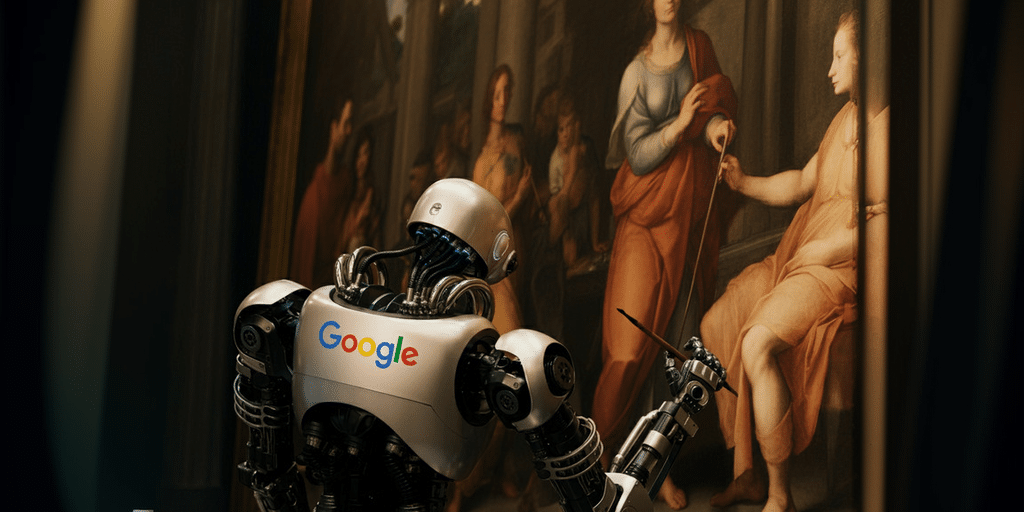In a landmark week for the generative artificial intelligence (AI) landscape, Google has unveiled its latest innovation, Imagen 3, a state-of-the-art text-to-image model. This new addition to Google’s technological arsenal is positioned to escalate competition in the AI domain, already bustling with significant developments like Dall-E 3 and MidJourney v5. Imagen 3, evolving from its predecessor introduced in December 2023, is designed to transform textual prompts into visually compelling images with an unprecedented level of detail and adherence to the user’s intent.
Unveiling Imagen 3: A Leap Forward in Text-to-Image Generation
Google’s Imagen 3, first announced in May, signifies a considerable advancement in the realm of AI-driven image creation. By leveraging enhanced abilities to interpret and execute complex prompts, this model can generate images encompassing a broad spectrum from photorealism to artistic renderings and 3D compositions. With a commitment to improving upon the capabilities of Imagen 2, Imagen 3 aims to set a new benchmark in image detail, lighting richness, and the minimization of distracting artifacts. This enhancement is a testament to Google’s ongoing pursuit of excellence in artificial intelligence.
Technological Sophistication and Versatility
One of Imagen 3’s standout features is its sophisticated prompt improvements which allow users to describe their desired images in natural language, eliminating the need for complex prompt engineering. The model’s training has been enriched with detailed image captions, enabling it to grasp nuanced details, specific camera angles, or compositions, and cater to long text prompts when necessary. This leap in technology underscores a significant move towards creating a seamless interaction between human input and AI output, ensuring that the resulting images are as close to the user’s vision as possible.
Google’s Endeavor for Higher Text Rendering Capabilities
While Imagen 3’s improvements are noteworthy, initial examinations reveal that its text rendering capabilities, though improved, still trail behind other models such as Dall-E 3, Auraflow, or Flux. Nevertheless, Google emphasizes the model’s enhanced text rendering prowess, indicating a focused effort to refine this aspect further. This honesty in acknowledging the current limitations while striving for improvement reflects a balanced approach towards technology development.
Commitment to Safety and Responsibility in AI
In the development and deployment of Imagen 3, Google has strongly emphasized its dedication to safety and responsibility. The tech giant has implemented stringent filtering and data labeling processes to mitigate harmful content in the model’s training datasets. Additionally, thorough evaluations, including red team exercises, have been conducted to identify and rectify potential vulnerabilities. This conscientious approach ensures that as AI technology progresses, it does so with a careful consideration of ethical implications and the potential impact on society.
Future Integration and Accessibility
Currently accessible through Google’s ImageFX platform and Vertex AI, Imagen 3 is set to receive popular editing features from its predecessor, such as inpainting and outpainting, in the forthcoming months. Google’s broader vision involves integrating Imagen 3 across its extensive product ecosystem, enhancing tools like the Gemini app, Google Workspace, and Google Ads with advanced AI capabilities. This strategic move highlights an ambitious plan to incorporate Gemini and AI technology across all services and hardware, demonstrated by the AI-centric innovation in its new Pixel 9 lineup.
The Competitive Landscape in AI Image Generation
The release of Imagen 3 occurs amidst a flurry of activity in the AI image generation space. With contributions from xAI’s Grok 2 featuring the Flux.1 image generator and MidJourney’s forthcoming v6.2 update, along with hints at its version 7, the sector is witnessing rapid advancements. Additionally, the Open Model Initiative’s choice of Flux.1 as the basis for its state-of-the-art open-source image generation model showcases the dynamic nature of competition in the AI field.
In conclusion, Imagen 3 marks a significant milestone in the ever-evolving generative AI landscape, with Google once again at the forefront of technological innovation. By focusing on enhancing detail, understanding complex prompts, and ensuring safety and responsibility, Google sets a new standard for text-to-image models. As we look ahead, the anticipated integrations and updates suggest a future where AI’s role in creative and professional environments becomes increasingly indispensable.
